CBC
Mon, October 9, 2023
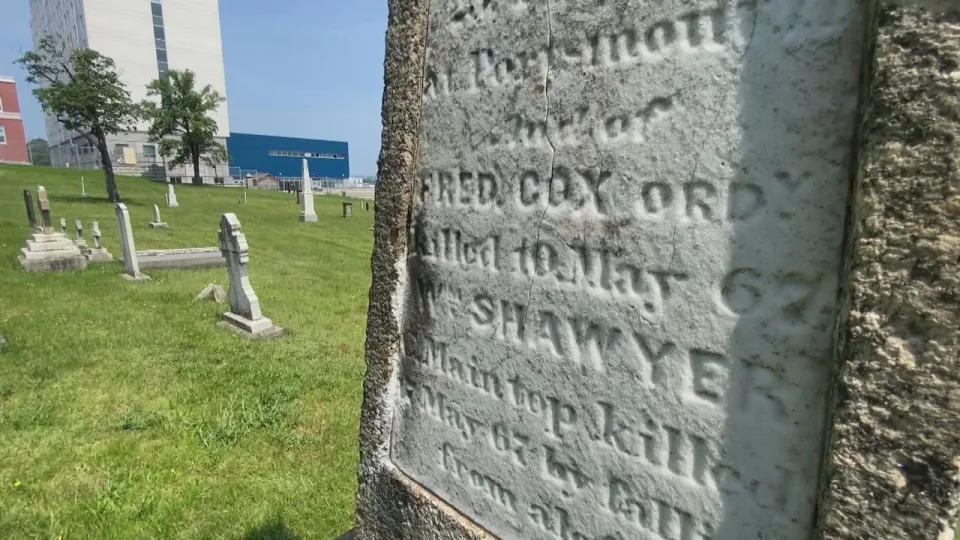
The grave marker for William Shawyer, who died falling from a ship's mast, is shown at the Royal Naval Burying Ground in Halifax. (Craig Paisley/CBC - image credit)
A small cemetery in the heart of Halifax tells the story of the city in its earlier days — yet few people know about it.
The Royal Naval Burying Ground opened in 1783 as an adjunct to a new naval hospital completed on the waterfront that same year.
At the time, Halifax was the centre of British naval operations for North America and the Caribbean. It was known as the Halifax Station.
The first recorded burial at the cemetery was in 1791, the last in 1910.
Today, it sits at the edge of what is now CFB Stadacona, in full view of thousands of people driving by on busy Barrington Street or coming into the city on the Angus L. Macdonald Bridge.
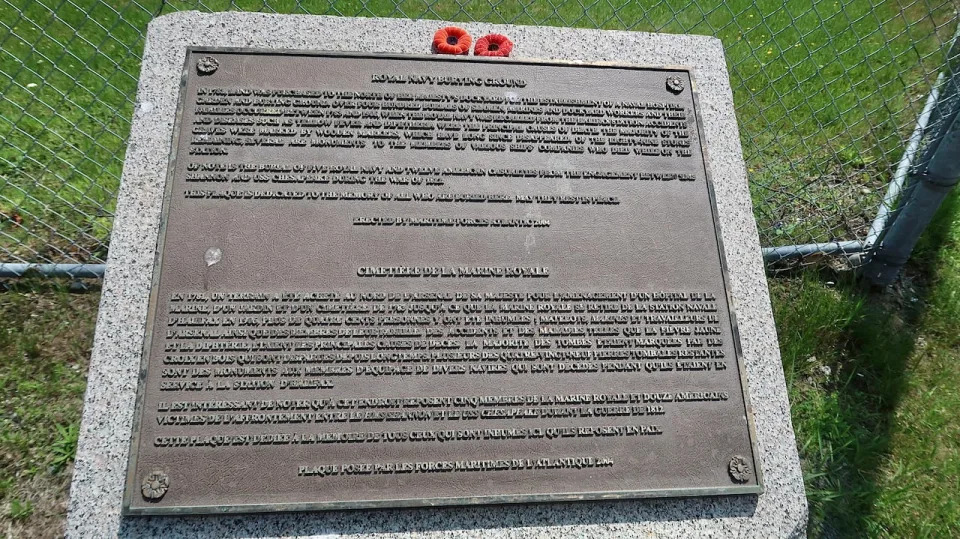
The burying ground provides a snapshot of the naval history of Halifax. (Galan McRae/CBC)
The cemetery is open to the public, but has few visitors, said Tom Tulloch, an honorary director of the Halifax Military Heritage Preservation Society.
Tulloch, who served 37 years in the Royal Canadian Navy, said the cemetery's location is a major reason it remains an undiscovered treasure.
He said it may be the only dedicated naval cemetery in Canada.
Describing it as a "magnificent place," Tulloch said it encapsulates a period of history that saw a large number of wars and conflicts.
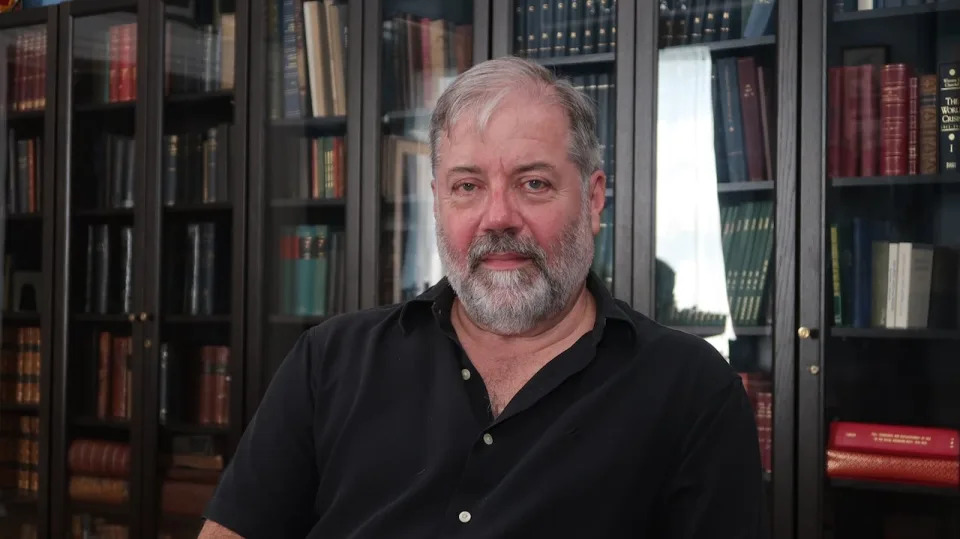
Tom Tulloch, who served 37 years in the Royal Canadian Navy, is an honorary director of the Halifax Military Heritage Preservation Society. (Vernon Ramesar/CBC)
"People drive past it because it's on the base and a lot of people, I think, are intimidated by the fact that it is on the base and they don't really know how to gain access to it," Tulloch said. "It is a phenomenal historical site."
He said most of the people buried there were ordinary Royal Navy seamen, their family members and workers from the naval yard.
Although there have been an estimated 1,000 burials in the small stretch of land, there are only about 80 grave markers visible.
Tulloch said many of the people who died at the military hospital would have had very simple burials at the cemetery.
In 1809, vice-admiral John Borlase Warren, the commander of the Halifax Station, wrote to the Admiralty deploring the way in which burials were carried out there.
"The Interment of such persons as die in the Hospital at this place is performed without any ceremony and in a very improper manner inconsistent with the rules of Decency which should be observed in such an Establishment, and with the religious attentions which ought to be paid to the remains of the Dead," he said.
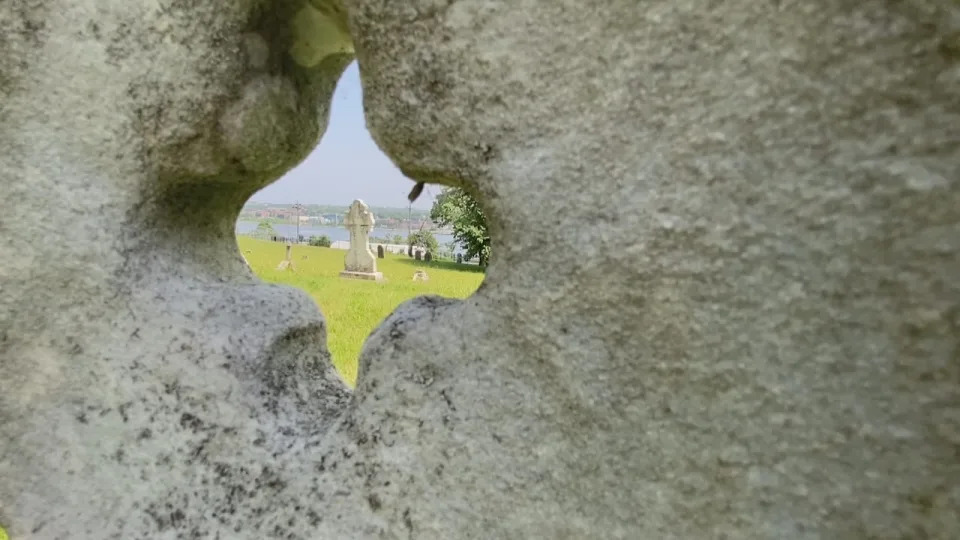
There are an estimated 1,000 people buried in the cemetery, but only about 80 grave markers visible. (Craig Paisley/CBC)
Most of these unceremonious burials would have had basic wooden crosses as markers that have disappeared with the passage of time, Tulloch said. Time has also taken its toll on many of the stone monuments, with inscriptions severely weathered.
The absence of markers is also a testament to one of the most traumatic events in the history of the city — the Halifax Explosion.
On Dec. 6, 1917, the Norwegian vessel IMO and the French cargo ship Mont-Blanc collided in the narrow passage connecting the Bedford Basin to Halifax harbour.
The Mont-Blanc was carrying explosives and the resulting blast killed and injured thousands of people and levelled parts of the city.
The burying ground is only about a kilometre away from the epicentre of the explosion.
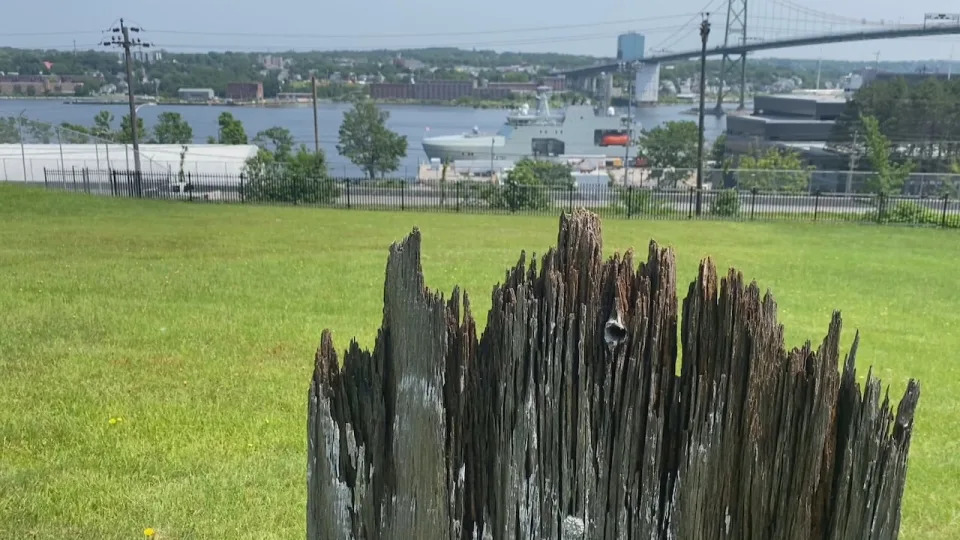
The centuries have taken a toll on many of the grave markers and most of the wooden ones have been destroyed by the weather. (Craig Paisley/CBC)
With nothing to shield the area from the blast, Tulloch said many of the grave markers were blown away. Blast debris also became embedded in the ground, he said, which means that today ground-penetrating radar cannot be used to locate the precise location and number of graves.
The Halifax Naval Museum is located in a 200-year-old building at the base and provides a wealth of records related to the cemetery.
Museum archivist Lisa McNiven said many of the people whose names are on markers are not actually buried in the cemetery but were instead memorialized there after dying at sea.
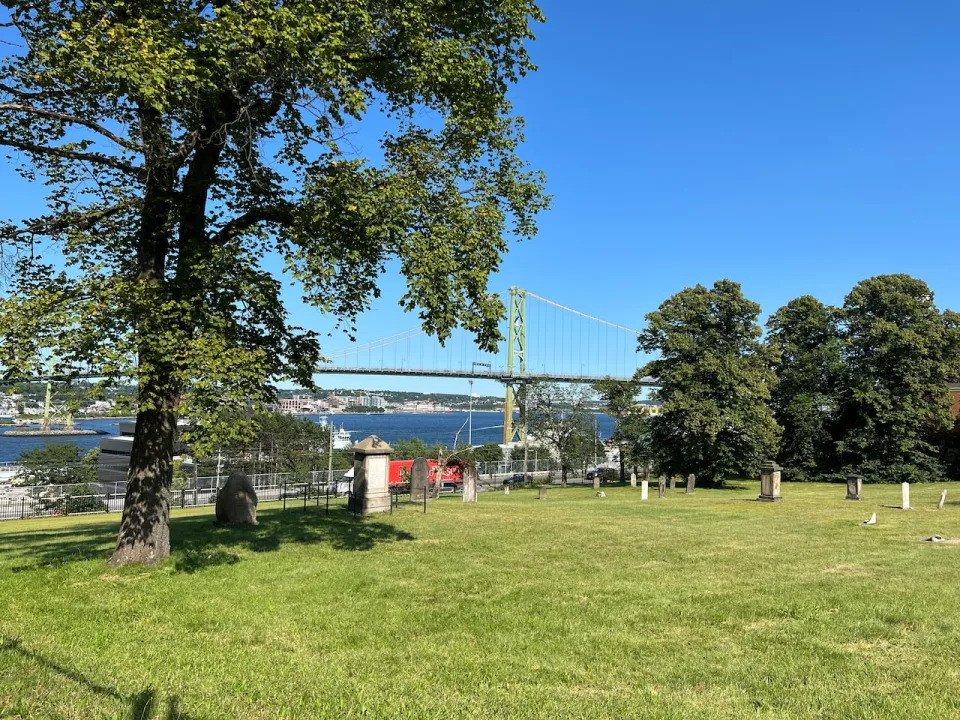
The Royal Naval Burying Ground was opened in 1783 to accommodate deaths at a hospital that opened nearby the same year. (Paul Pourier/CBC)
"A lot of stones that are placed down there are in tribute to young men that had passed either falling from topsails, yellow fever [or] cholera," McNiven said.
"Their crew members are coming together and putting a headstone … so that they are memorialized and remembered."
In fact, a surprising number of markers list the cause of death as falling from a mast or "falling from aloft."
War of 1812
Two of the most impressive monuments, just inside the main gate of the cemetery, commemorate dozens of crew members who died in the battle between the Royal Navy frigate HMS Shannon and USS Chesapeake during the War of 1812.
After an intense engagement off Boston on June 1, 1813 — which lasted only 15 minutes — HMS Shannon captured the American frigate and brought it back to Halifax harbour where it was met by cheering crowds.
During the battle, the Chesapeake's wounded captain, James Lawrence, famously said "don't give up the ship," an instruction his crew were ultimately unable to follow.

Lisa McNiven is the archivist at the Naval Museum of Halifax. (Vernon Ramesar/CBC)
The monument to the Shannon, erected a few decades after the battle, lists the names of some of the 23 crew members killed.
The Chesapeake monument was erected in the 1960s and lists the names of the 50 crew members who died in the battle.
Lawrence, the Chesapeake's captain, died of his wounds, but because he was of a higher rank, he was initially buried at the Old Burying Ground in Halifax.
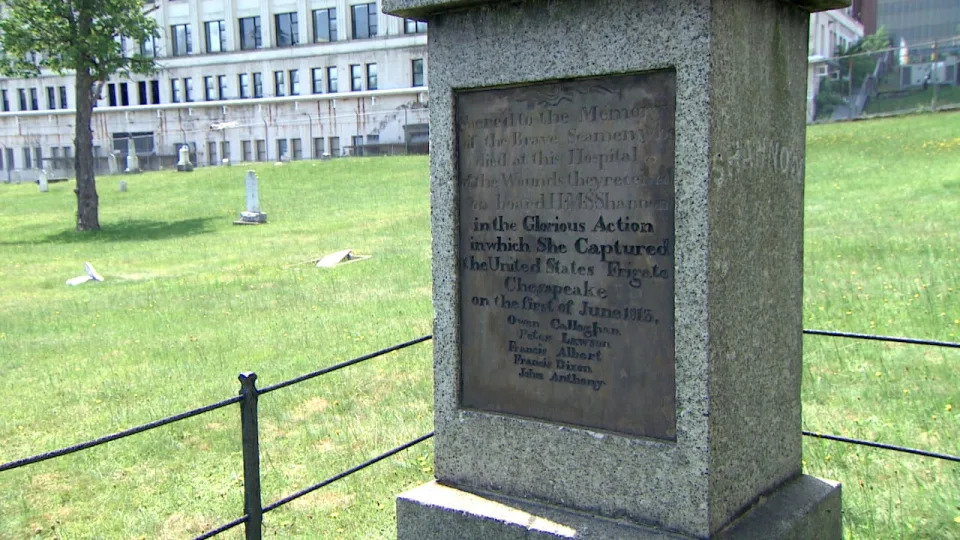
A memorial to crew members of HMS Shannon who died during its encounter with USS Chesapeake in 1813 is seen inside the cemetery. (Craig Paisley/CBC)
His remains were eventually reinterred at Trinity Church and Burying Ground in New York City.
McNiven said the museum offers educational tours that give people a sense of the importance of the base and the significance of the Royal Naval Burying Ground.
She said anyone wishing to visit the cemetery should contact the Naval Museum. CFB Stadacona requires photo identification to enter.
No comments:
Post a Comment